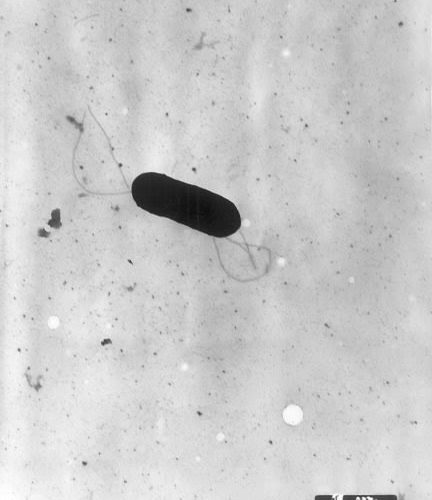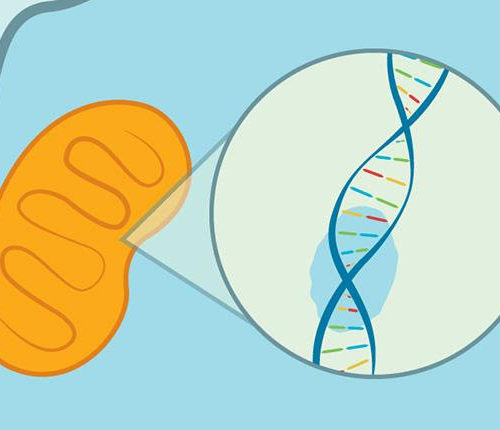STANFORD UNIVERSITY A PROTOTYPE OF THE HANDHELD AMMONIA BLOOD DETECTOR AND ASSOCIATED TEST STRIPS, DEVELOPED BY RESEARCHERS AT STANFORD. view more CREDIT: THOMAS VELTMAN Seated around the dinner table, faculty affiliated with Stanford ChEM-H – one of Stanford University’s interdisciplinary institutes – spoke one-by-one, pitching ideas for collaborative research. Inspired by a recent medical conundrum,...
Tag: <span>RNA</span>
TEAM CREATES VESICLES WITHOUT ANY LIPIDS
Scientists have created hollow, spherical sacks called vesicles by using protein and RNA. These bubble-like entities—which form spontaneously when specific protein and RNA molecules mix in an aqueous buffer solution—hold potential as biological storage compartments. They could serve as an alternative to traditional vesicles that are made from water-insoluble organic compounds called lipids, researchers say....
Listeria protein provides a CRISPR ‘kill switch’
A single protein derived from a common strain of bacteria found in the soil will offer scientists a more precise way to edit RNA. The protein, called AcrVIA1, can halt the CRISPR-Cas13 editing process, according to new research from Cornell, Rockefeller University and the Memorial Sloan Kettering Cancer Center published in the journal Science. “We’re...
Yale, Baylor create detailed atlas of cellular change in lungs with fibrosis
A research team from Yale and Baylor College of Medicine has completed the largest single-cell analysis to date of lungs affected by Idiopathic Pulmonary Fibrosis (IPF), revealing how cells change in response to the disease and identifying previously unknown cell types. The findings, published in the issue of Science Advances, deepen understanding of IPF and...
A balancing act between immunity and longevity
by Max Planck Society As we age, the immune system gradually becomes impaired. One aspect of this impairment is chronic inflammation in the elderly, which means that the immune system is constantly active and sends out inflammatory substances. Such chronic inflammation is associated with multiple age-related diseases including arthritis and Alzheimer’s disease, and impaired immune...
New molecular tool precisely edits mitochondrial DNA
UW microbiologists discovered a bacterial toxin that, when engineered, is a key part of a gene editor that can make single-base changes in human mitochondria. The genome in mitochondria — the cell’s energy-producing organelles — is involved in disease and key biological functions, and the ability to precisely alter this DNA would allow scientists to...
Genetic editing milestone in mouse model of Rett Syndrome
Editing technique repairs mutant MeCP2 RNA and restores MeCP2 protein function RETT SYNDROME RESEARCH TRUST LEAD AUTHOR, JOHN SINNAMON, AND PRINCIPAL INVESTIGATOR, GAIL MANDEL. view more CREDIT: RETT SYNDROME RESEARCH TRUST A genomic error that causes Rett Syndrome, a serious lifelong neurological disorder, can be corrected in the brains of mice by rewriting the genetic...
CBD may help avert lung destruction in COVID-19
MEDICAL COLLEGE OF GEORGIA AT AUGUSTA UNIVERSITY DRS. JACK YU AND BABAK BABAN view more CREDIT: PHIL JONES, SENIOR PHOTOGRAPHER, AUGUSTA UNIVERSITY Cannabidiol, or CBD, may help reduce the cytokine storm and excessive lung inflammation that is killing many patients with COVID-19, researchers say. While more work, including clinical trials to determine optimal dosage and...
Searching for the Right Food for Gut Health? This Microbiome Test Has Answers.
When it comes to gut health, Viome’s Gut Intelligence Test is absolutely the best place to start. However, if you’re looking to take things a step further, you should check out Viome’s new Health Intelligence Service. It gives you everything you get with the Gut Intelligence Service. However, it also includes a human gene expression...
RNA key in helping stem cells know what to become
Findings could lead to new therapies for cancer, heart abnormalities UNIVERSITY OF COLORADO AT BOULDER Look deep inside our cells, and you’ll find that each has an identical genome -a complete set of genes that provides the instructions for our cells’ form and function. But if each blueprint is identical, why does an eye cell...






